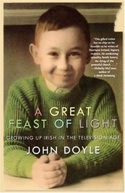October 16, 2010
TORONTO — In a sports bar one recent night, the bartender was giving away collectible beer glasses bearing the Toronto F.C. logo and motto, “All for One.” For some, those words are hard to swallow right now.
These are desperate days in Toronto. Within a month, it seems, Toronto F.C. has gone from a beloved team to the focus of bitterness and anger. There is an interim coach and, at 8-13-7 before Saturday’s game, no possibility the team will make Major League Soccer’s playoffs. Ticket prices are rising. Some players have been invisible on the field, and others want more money.

Toronto F.C.'s fans have been showing their displeasure with the club's owners, Maple Leaf Sports and Entertainment.
Recent events unfolded like the sour end to a once sweet relationship. Last month, in the waning minutes of a 1-0 loss to D.C. United, the team with the worst record in M.L.S., a vaguely sinister murmur emanated from where Toronto’s hard-core fans, the Red Patch Boys, congregate. Then it was loud and clear: “We’re nor going to take it/Oh no, we’re not going to take it anymore.” Everyone in the packed stadium stared and listened, shocked. Two days later, Coach Preki Radosavljevic and the director of soccer, Mo Johnston, were fired.
Then, less than a week later, the club’s owners, Maple Leaf Sports and Entertainment, announced that the price of some ticket packages for 2011 would increase by 34 percent. The announcement was preceded by a report in The Toronto Globe and Mail that revealed that season-ticket prices and top-price single-game tickets were already higher than those charged by Manchester United and several other top teams in England.
M.L.S.E. responded by saying it was an apples-and-oranges comparison. English Premier League stadiums are much bigger, so ticket volume lowers prices. Fair point, but the damage was done. It costs more to watch Toronto F.C. than to see Wayne Rooney and Ryan Giggs play.
The price increase was announced on a Tuesday. The next Saturday, after scoring against the San Jose Earthquakes, Toronto’s captain, midfielder Dwayne De Rosario, pretended to sign a check, a gesture instantly understood as his asking for a raise.
“Each of the incidents have been a great distraction for supporters,” said an exasperated Boris Aguilar, the president of the Red Patch Boys. “A supporter is there to support the team through good times and bad. These things added to what many of us call a complete failure of a year. But the one story that alienated us was the season-ticket package.”
It was not supposed to be like this. Toronto, the biggest city in Canada and the most ethnically diverse in North America, fell in love with the team during its inaugural season, in 2007. This is one M.L.S. city that never needed David Beckham to sell the game. From the start, every game at BMO Field, which holds 20,000 people, was sold out. (BMO Field will be the site for the M.L.S. Cup on Nov. 21.) There were 14,000 season-ticket holders. The atmosphere was electric — noisy, buoyant, cheerful. Even here in N.H.L. country, one did not have to explain to the offspring of immigrants from countless soccer countries how to enjoy a game.
Indeed, on a cold, wet October day, after a 2-2 tie with the New England Revolution in the final game of Toronto’s first season, fans ran onto the field. They danced with joy, did conga lines around the center circle and were lost in a reverie.
The second and third seasons came and went, with new players and a coach or two. Johnston was the coach in the first season. A former player in England and Scotland (famously the first to play for both Glasgow Celtic and its bitter rival, Glasgow Rangers) and an M.L.S. coach in Kansas City and with the Red Bulls, he charmed Toronto fans. He was promoted to director of soccer and along came the Englishman John Carver as the coach, followed by another Englishman, Chris Cummins. The Canadian players De Rosario (an M.L.S. veteran) and Julian de Guzman (from La Liga in Spain) came home to play and increased the local-pride factor in the country’s only M.L.S. team.
Still, the team stumbled. At the end of the 2009 season, Toronto F.C. needed to beat the Red Bulls, then at the bottom of the M.L.S. standings, to make the playoffs. It lost, 5-0. A month later, Radosavljevic was named the coach for 2010. A former playing colleague of Johnston’s, Radosavljevic had coached Chivas USA to the playoffs and was named the M.L.S. coach of the year in 2007.
Throughout, fans remained supportive. The raucous, ceaseless singing and chanting at home games was a key element of the entertainment, selling tickets and making television broadcasts compelling. Even at games in Columbus or at the Red Bulls, 1,000 Toronto fans might turn up. The Red Patch Boys organized the bus or plane trips and the hotels. Such was their organizational skills that the Ontario government asked them to stop acting as a de facto travel agency, or get an official license to do so.
The fan groups, organized and vocal, have felt as if they had an ownership-like stake in the team. This is not atypical in Europe and South America, where most clubs are historically rooted in a community and began as an affiliation of players and supporters. There, loyalty means influence. In M.L.S., though, every club is a business franchise, created, owned and operated by a corporation. The fans are customers, not stakeholders.
History should have warned against expectations of backing a winner in Toronto, where F.C. is believed to be worth $100 million, 10 times what it cost to start the team. M.L.S.E. also owns the Maple Leafs of the N.H.L. and the N.B.A.’s Raptors, both immensely profitable underperformers.
On Thursday, Toronto F.C.’s owners sent an open letter to the fans. It began, “Dear Toronto FC Fans, we are sorry.” It continued: “We fell short of our goals and, more importantly, your expectations. But most of all, we are sorry for not listening better.”
Speaking to The Toronto Star last week, Tom Anselmi, the chief executive of M.L.S.E., said: “Our job is real simple now. It’s to deliver them a product they can be proud of, give them something to cheer about. We’re going to turn it around.”
Aguilar said he had mixed feelings.
“The first reaction was, too little too late,” he said. “That’s the cynic in me. My second reaction was that it takes a lot to admit that they have gotten it wrong. I want to believe T.F.C. and M.L.S.E. when they say those things. However, we have gone through four years of more downs than ups. Time is running out, and they will have to work hard to keep some of their loyal fans.”
Right now, the Toronto F.C. glass is not half-full or half-empty. It is just as empty as that collectible beer glass, waiting to be filled, if both sides can just get along, “All For One.”
John Doyle is an arts columnist for The Globe and Mail and the author of “The World Is A Ball: The Joy, Madness & Meaning of Soccer.”



